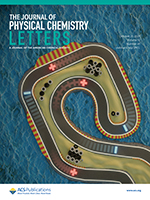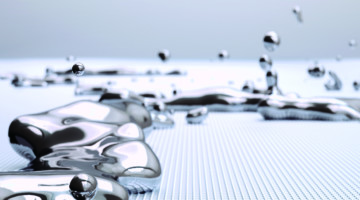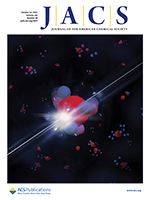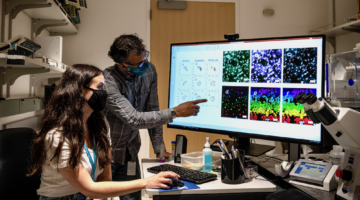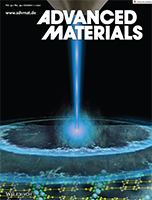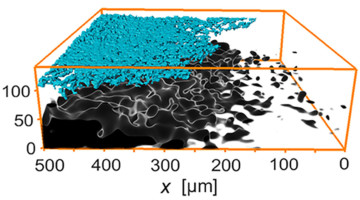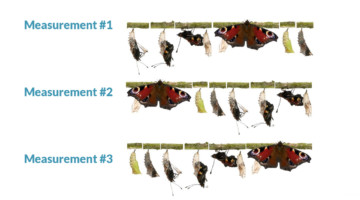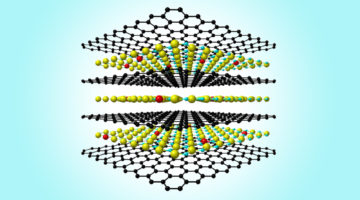To understand corrosion, energy storage, (electro)catalysis, etc., obtaining chemical information on the solid–liquid interface is crucial but remains extremely challenging. Here, x-ray absorption spectroscopy is used to study the solid–liquid interface between TiO2 and H2O. This result highlights the potential of electron-yield XAS to obtain chemical and structural information with a high sensitivity for the species at the electrode–electrolyte interface. Read more »
The Elusive Electronic Structure of Liquid Metals Unveiled
Over 50 years ago, renowned physicists formulated theoretical models for the electronic structure of liquid metals. Now, for the first time, researchers observed the distinct spectral features predicted by those models, at the interface of a crystalline insulator (black phosphorus) and disordered dopants (alkali metals). Read more »
New Technique Paves the Way for Perfect Perovskites
A new solar material, organic-inorganic halide perovskites, could one day help the U.S. achieve its solar ambitions and decarbonize the power grid. A recent study reports that manufacturing could be aided by a new instrument that uses invisible x-ray light and visible laser light to probe a perovskite material’s crystal structure and optical properties as it is synthesized. Read more »
Trace Key Mechanistic Features of the Arsenite Sequestration Reaction with Nanoscale Zerovalent Iron
The advancing in situ XAS technique made it possible to uncover the As-nZVI reaction pathway, especially capturing transient reaction process at subsecond scale. Combining the in situ XAS experimental data with computational chemistry enabled the reaction steps to be verified, clarifying the unambiguous identification of the transit reactive intermediates. Read more »
Cell ‘Fingerprinting’ Could Yield Long-Awaited Alzheimer’s Disease Diagnostic
A new application of infrared spectromicroscopy analyzes cells for signs of Alzheimer’s disease by measuring how the molecules in cells vibrate upon exposure to infrared light. The vibrational profile of each sample is so distinct and the difference between diseased and healthy cell samples is so visible that researchers liken the process to “cellular fingerprinting.” Read more »
Laser-Induced Cooperative Transition in Molecular Electronic Crystal
The cooperative tuning of a supramolecular electronic crystal enables access to a long-lived hidden conducting phase with a broad temperature range. Researchers demonstrate a dynamic and cooperative phase in K-TCNQ, with the control of pulsed electromagnetic excitation. A dedicated charge–spin–lattice decoupling is required to activate and subsequently stabilize the non-equilibrium phase. Read more »
ALS in the News (September 2021)
-
-
-
- ALS staff and partners recognized by the 2021 Berkeley Lab Director’s Awards: Howard Padmore, Monroe Thomas, Institutional Biosafety Committee, CXRO, PHENIX Software Team
- Researchers unraveling mysteries of electrosensory gel in sharks, skates
- Electrons on the edge: The story of an intrinsic magnetic topological insulator
- New discovery about meteorites informs atmospheric entry threat assessment
- A simple way to get complex semiconductors to assemble themselves
- A new approach creates an exceptional single-atom catalyst for water splitting
- DOE panel finds US falling behind in basic energy sciences
-
-
3D View Reveals Shadow Effect after Rapid Battery Charging
Using 3D x-ray microtomography, researchers measured the lithiation levels of particles in Li-ion battery electrodes during charging. At faster charging rates, lithium metal accumulated on the electrode surface and created a “shadow effect,” a region of poor lithiation in the electrode at some distance away from the lithium plating. Read more »
When Timing Isn’t Everything: Spontaneous Chemical Dynamics
Researchers combined aspects of x-ray photoelectron spectroscopy (XPS) with correlation spectroscopy—a statistical method capable of detecting patterns in microscopic fluctuations across space and time. The new technique, called time-correlation XPS, allows researchers to monitor dynamics without the need for a timed trigger. Read more »
A Two-Dimensional Room-Temperature Magnet
Researchers have made the world’s thinnest (one atom thick) magnet that’s chemically stable under ambient conditions. The two-dimensional material, magnetically characterized at the ALS, could enable big advances in next-generation memory devices, computing, spintronics, and quantum physics. Read more »![]()
![]()
- « Previous Page
- 1
- …
- 27
- 28
- 29
- 30
- 31
- …
- 83
- Next Page »
